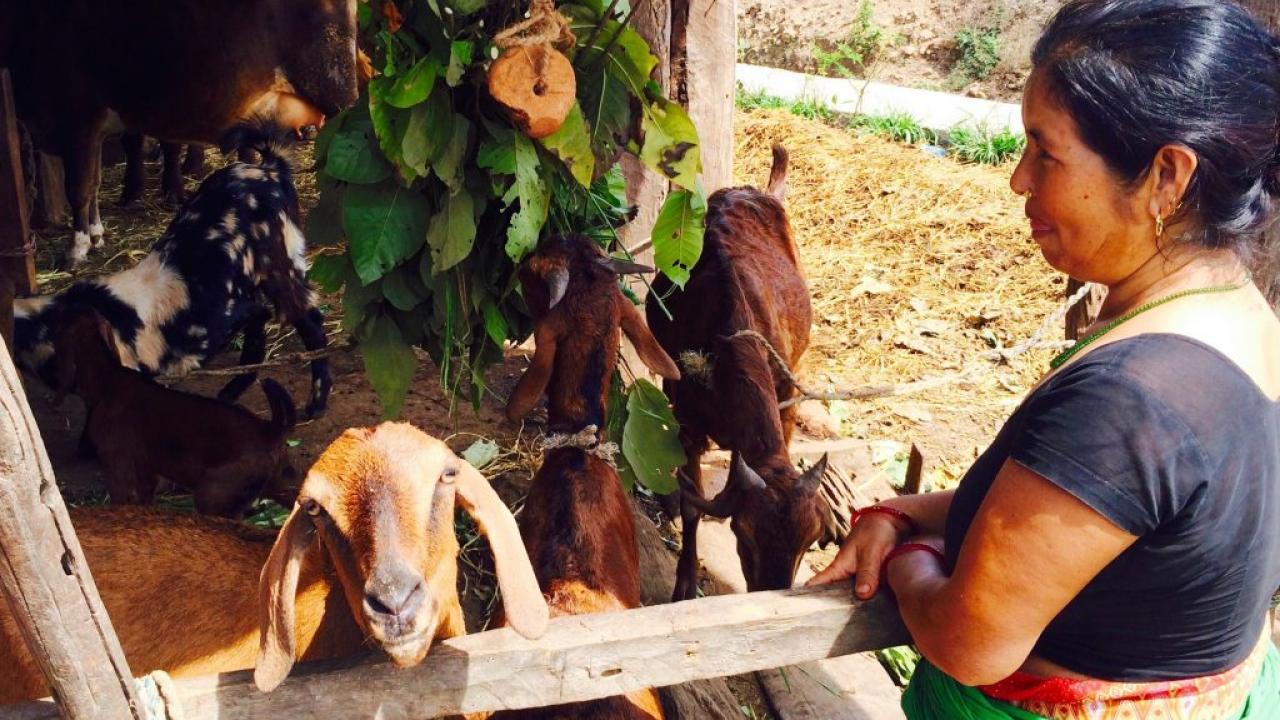
Social protection policies and programs have been widely heralded as important for addressing persistent poverty. The aim of social protection is to enhance the capacity of poor and vulnerable persons to manage economic and social risks. Productive asset transfer programs, often involving livestock, are a particularly popular form of social protection for vulnerable populations. Heifer International, the implementation partner for this project, is widely recognized as a global leader among organizations providing livestock transfers to poor households.
Project overview
Lead PI: Nicholas Magnan, University of Georgia
Partners: NEPA School for Social Sciences and Humanities, Heifer International
Region: South Asia
Timeline: 2014-2017
Funding: $897,878
Key innovation: Physical, Human and Social Capital Transfers
In recent years, Nepal has made significant strides towards poverty alleviation, but poverty persists, especially in the countryside; 55% of Nepalese earn less than $1.25 per day, but that number climbs sharply in the rural mountain and hill districts where more than 70% of people rely on agriculture for income generation. The importance of livestock to Nepalese smallholders in these areas has grown steadily in recent years. In these districts, livestock ownership is highly correlated with both meat consumption and income, suggesting that livestock transfers may be an effective form of social protection.
Project Summary
This project seeks to disentangle the importance of physical assets relative to human and social capital in the provision of social protection designed to improve (and permanently alter) the nutritional and economic outcomes for the chronically poor in Nepal by evaluating the welfare impacts of a social protection program implemented by Heifer International. Programs like Heifer’s typically seek to improve the productive capacity of households through the provision of physical, human or social capital, and often some combination of the three “packaged” together. Through a randomized control trial (RCT), researchers are comparing the average treatment effect of different “packages.”
The three treatments are: “social capital investments” through facilitated group formation with the explicit goal of savings, and a series of empowerment training sessions, “human capital investments” through participation in trainings covering a wide variety of technical topics related primarily to livestock management, and “physical capital investment” ” in the form of a productive asset transfer (of variable timing) in the form of livestock.
The qualitative research component will complement the quantitative to provide a deeper understanding of the impacts of the Heifer program on welfare indicators, especially female empowerment and aspirations. This component of the study will focus on farmers’ perceptions – both beneficiaries and non-beneficiaries – of the perceived impacts of the program on individual, household, and community welfare, and on the control of assets within households.
Anticipated Impacts
This research project, as a program evaluation, seeks to add to our understanding of how asset transfers and human and social capacity building programs contribute to the key Feed the Future concerns of improved nutrition, gender integration and inclusive agricultural sector growth. Another major focus of this study is the intersection of gender and caste/ethnicity, religion, class, and other vectors, and how the intersection affects the aspirations and ability of specific women to benefit from these interventions.
